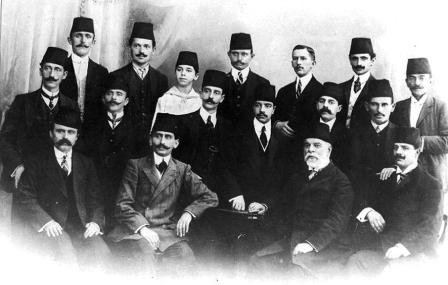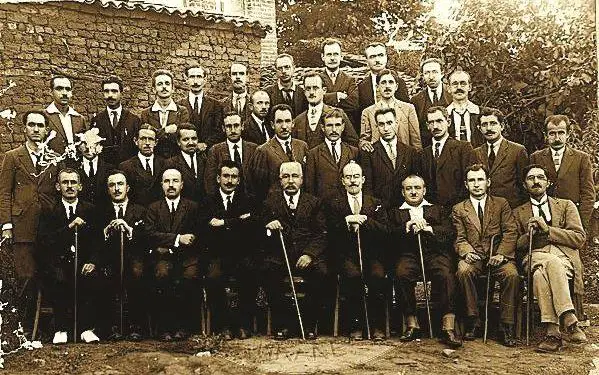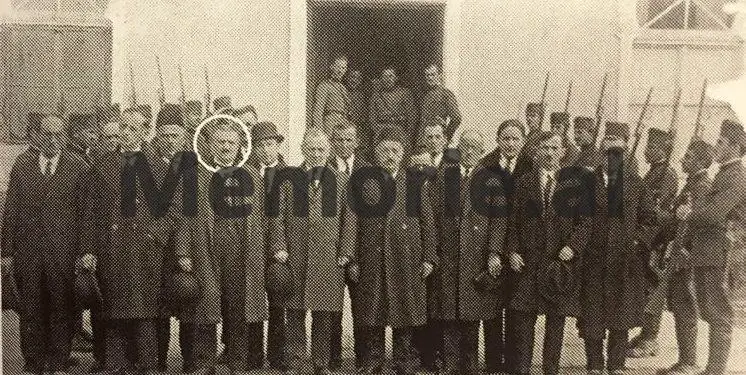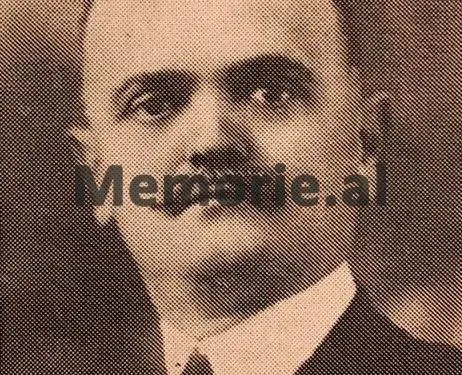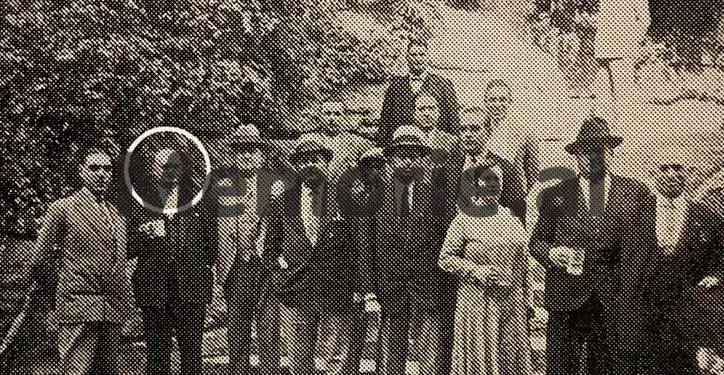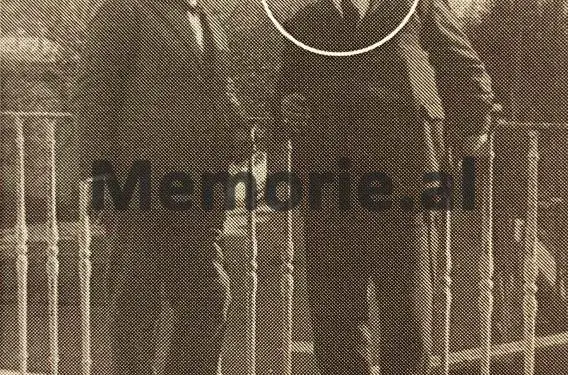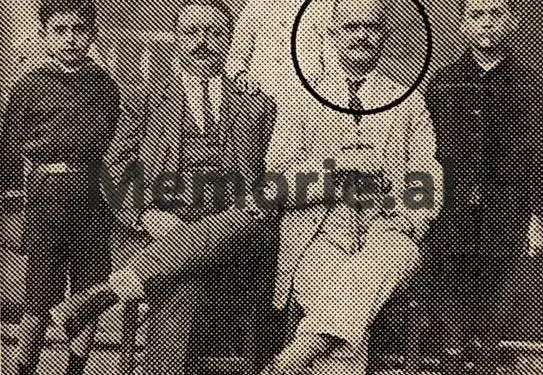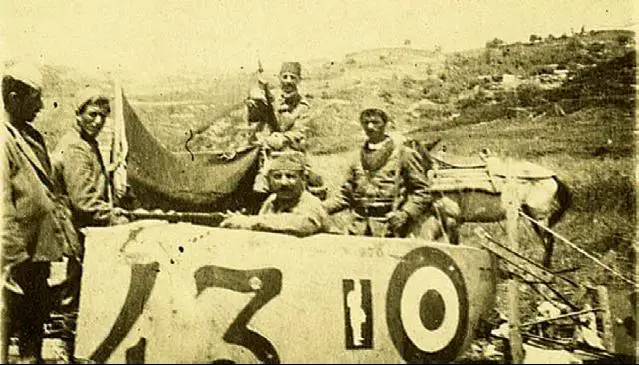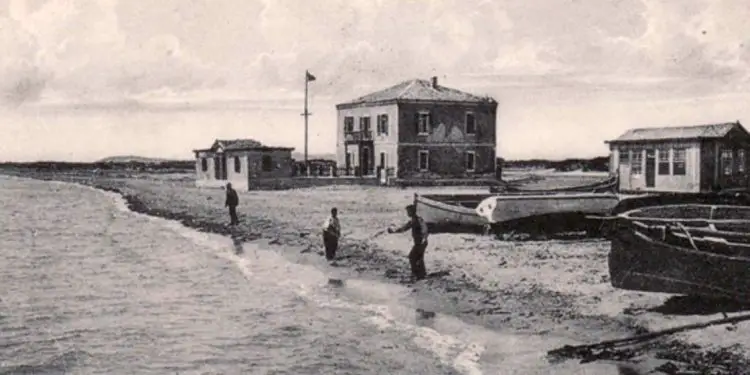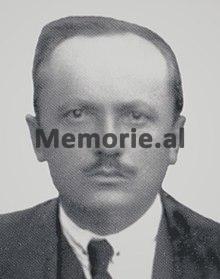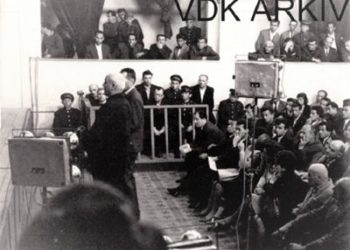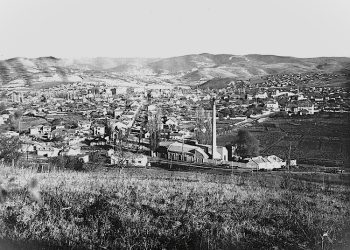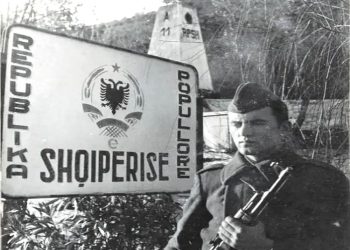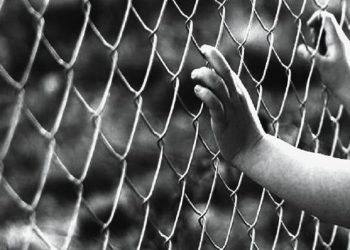Dashnor Kaloçi
Memorie.al publishes the unknown history of the Vlora War of 1920, according to the memoirs of Sejfi Vllamasi, former MP and minister, who in his memoir, “Political confrontations in Albania 1897-1944”, described him as details and details of all the stages that led to that war from 1919 to June 1920, where among other things he writes: “Despite the lack of funds, the volunteers of Vlora, on the contrary, were more humane against the prisoners of war and this human behavior was confirmed by the correspondent of the newspaper “Daly Chicago”, Mopderuell, who came to Drashovica, where he stayed for 15 days to investigate, as Italian newspapers wrote that Albanians have taken their eyes off and cut off the ears of prisoners of war… The correspondent, who was also the representative of an agency, after making the necessary observations, went to Rome and in an article published in the newspaper “Tribuna”, he denied the slanders of the Italian newspapers “.
“The time from March to May 20, 1920, the day of the declaration of war, has passed with the preparation of the war, the organization of the agitation, and the fulfillment of the needs for weapons and ammunition. The effect of spiritual preparation on the people has been at its peak. Weapons and ammunition were missing. The government had neither weapons, nor ammunition, nor financial means to provide them with money, and the last attempt to do so with my mission failed. On the other hand, the enemy, seeing the preparations for an uprising, began to pursue the most chosen patriots of the country and to strengthen the military facilities in Tepelena, Kota, Gjormë, Drashovica, Panaja and Llogara with modern weapons. The post-commander tripled them with carabinieri, encircling them with wire and reinforcing them with artillery. In May 1920, the enemy became furious and, after failing to bring the Albanians to the top, decided to use force. A large number of patriots of the town and villages, who were being pursued by the Italians, were arrested. On the night of May 9 and the next day, the Italians had blocked the city and the carabinieri entered the neighborhood and arrested more than 500 people, who put them in an old steamer in Molo “, he wrote, among other things, about the beginning of Sejfi Vllamasi, in his book “Political confrontations in Albania 1897-1942”, describing in the war of Vlora, describing in detail everything that happened in that distant event which is considered one of the brightest pages of the history of Albania, with which the communist regime of Enver Hoxha is also proud. But even though that event was commemorated with great ceremonies before the 1990s, the communist regime and its official historiography and propaganda not only forgot some of the main leaders of the Vlora War, such as Osman Haxhiu, Hamza Isain. , Qazim Koculi, Qazim Kokoshi, Mehmet Alemi, Eshref Dano Bocari, Hysni Lepenica, Tahir Hoxha, etc., but most of them were executed or declared “enemies and traitors”, by imprisoning or deporting their families and fabricated false heroes, such as Selam Musa Salaria, Kanan Maze, Dule Dalani, etc., who played peripheral roles in that war.
Memories of Seji Vllamasi for the Vlora War
Along with some few archival documents left over from the distant 1920s, on the glorious epic of the people of Vlora, Kurvelesh, Tepelena and all of Labëria, in the war against the invading Italian forces, are the memories of Sejfi Vllamasi (former MP in some cabinets after 1912), which shed light on the reasons that forced the Vlora people to kidnap the double. In this regard, in his book of memoirs: “Political confrontations in Albania, 1897-1942), among other things he writes:” On September 3, 1919, based in the city of Vlora, an 11-member committee was formed. who represented the provinces as well as the city of Vlora. The city was represented by Qazim Kokoshi, Osman Haxhiu, Hamza Isai, Kol Karbunara, and Tod Filipi. The provinces were represented by Ymer Rradhima, Ducati; Ahmet Lepenica, Mesaplikun; Rapo Çelo, The Way; Qazim Koculi, Treblova; Idriz Ladërri, and Mystehak Oshtimia, Top Alltinë. The committee was chaired by Hamza Isa. The first five stayed in the center and were connected to all parts of Albania. The last six had secret connections with the former and stayed among the provinces. The committee was tasked with keeping alive hopes for the freedom of the homeland, waging a passive war and sowing hatred against Italians, not teaching the Italian language in schools, fighting spies and their collaborators, and celebrating November 28 at all costs. , which had not been celebrated since 1914 when it was overthrown by the rebels. Despite the difficult conditions in which it found itself, the Committee, with slow but sure steps, expanded its activity. In Mesaplik and Tragjas he had sent a typewriter and a polygraph, where propaganda tracts against Italy were printed and distributed, which were also sent to Himara, Kurvelesh, Mallakastër, Berat, Gjirokastër, and Korçë, by Halim Xhelos and Hysni Lepenica, Meçan Kallarati and Tahir Hoxha. Village teachers have been brave flag bearers of courageous actions, as have old patriots. Each province had a cell, led by old teachers and patriots, to uphold the morale of the people and to create hatred against the enemy. Theater parts were also shown in Tërbaç. After the occupation, until November 28, 1919, the Committee at the meeting held in the cafe of Hamza Isa, decided with one voice to celebrate this year the Flag Day with the participation of the people of the city and provinces, as well as school students. The committee also sent a three-member commission, headed by Osman Haxhiu, to General Ferraro, commander of the Italian forces in the Balkans, to seek permission to celebrate the day as the people wished. The general categorically refused and only to convey them, he was told: “I will order the Albanian flag to be raised, but any manifestation on the streets will be banned, while the public security authorities will take measures against those who will act. otherwise “. Osman Haxhiu responded in flames with these words: “We will celebrate at any cost on the day of our Independence, no one can stop the people from celebrating the holy day, you do whatever you want”, and left the general’s office nervously. The committee knew that a negative response would be received, but he had taken every measure to deal with any situation other than the bloodshed, as the work was not mature to that degree. The word spread in the city, where the heads of the provinces were also, that the Italians did not allow the celebration. But the celebration was set. The committee promised that prayers would be offered in church and mosque the next day and that the people would be dispersed from there. That was enough to keep the enemy asleep. The next day at 9 o’clock in the morning a group of imams with muftis at the top, with the Orthodox and Catholic priest, with them Osman Haxhiu with the members of the Committee and with the three sons of Ismail Qemali and with 12 boys dressed in national clothes and a flag embroidered with gold, headed to the Plakhana Mosque and entered. After them, the people and the students of the school gathered, under the leadership of the veteran patriot, Professor Jani Minga. After the religious prayers and after a patriotic speech of the professor, the people with the flag in hand headed to the big road in a fiery manifestation shouting: “Long live Albania, Long live the National flag, foreigners outside our country.” Immediately 200-300 rifle butts and swordsmen come forward and force them to disperse. Before the carabinieri, a major orders Osman Haxhina to disperse the crowd, but Osmani opposes and the crowd rushes forward, shouting: “Long live independent Albania.” The enraged carabinieri struck the flag with swords and bayonets, Osman Haxhiu, entered the mosque and went out the other door. Nervousness in the people and especially in the young people themselves at the peak and the demonstration continues with a torn flag piece by piece in the hands of the people. They are not afraid of the carabinieri. They were able to snatch a flag from school children and hang a dog. The enraged people clash with them with sticks and stones. The clash lasted for a quarter of an hour, during which many people, even children, were lying on the ground bleeding. But even the enemy, no matter how protected, was covered in blood. The people dispersed. The young people in the cafe sang the national anthem. An oil exploded in the city and the hatred against the enemy reached its peak. In the provinces, by order of the Committee, despite the measures of the enemy, the day of the flag was also celebrated. With the stabilization of the Government of Tirana, the Committee sends a commission to Tirana under the chairmanship of Qazim Kokoshi, to deal with the government for aid to the people of Vlora in the event of an eventual war to pursue the enemy from the national land. The government responded to the commission that it would help it with everything, but with unofficial measures and forms. Upon the return of the Commission to Vlora, the government sent me from Tirana to Belgrade on a mission, as we have spoken above. So, on the encouragement of the government, with the encouragement of Albania’s friends and based on the bravery of the patriotism of the people of Vlora, Kurvelesh, and Tepelena, the Committee decided to give the last ultimatum to Italy to liberate Albanian land. The time from March to May 20, 1920, the day of the declaration of war, passed with the preparation of the war, the organization of the agitation, and the fulfillment of the needs for weapons and ammunition. The effect of spiritual preparation on the people has been at its peak. Weapons and ammunition were missing. The government had neither weapons, nor ammunition, nor financial means to provide them with money, and the last attempt to do so with my mission failed. On the other hand, the enemy, seeing the preparations for an uprising, began to pursue the most chosen patriots of the country and to strengthen the military facilities in Tepelena, Kota, Gjormë, Drashovica, Panaja and Llogara with modern weapons. The post-commander tripled them with carabinieri, encircling them with wire and reinforcing them with artillery. In May 1920, the enemy became furious and, after failing to bring the Albanians to the top, decided to use force. A large number of patriots of the town and villages, who were being pursued by the Italians, were arrested. On the night of May 9 and the next day, the Italians had blocked the city and the carabinieri entered the neighborhood and arrested more than 500 people, who put them in an old steamer in Molo. Muslim, Orthodox, and Catholic clergy, Professor Jani Minga, lawyer Agjah Libohova, Hasan, and Musa Shabran, as the country’s first, were transported by boat. After two days, they abducted all the men, old and young, from their homes, took what they had with them, and escorted them with that steamer to Sazan. Some of the hostages were left in the steamer. There were more than 3,000 people in Sazan, including 14-15-year-old schoolboys, placed in barracks surrounded by wire. The Italians transported the people of Vlora to Sazan for revenge and behaved in a very barbaric manner, which was a stain on a government that represents a civilized people. Despite the lack of funds, the volunteers of Vlora, on the contrary, were more humane towards the prisoners of war and this human behavior was confirmed by the correspondent of the newspaper “Daly Chicago”, Mopderuell, who came to Drashovica, where he stayed for 15 days to investigate. as Italian newspapers wrote that the Albanians had taken their eyes off and cut off the ears of the prisoners of war. The correspondent, who was also the representative of an agency, after making the necessary observations, went to Rome and in an article published in the newspaper “Tribuna”, he denied the slanders of the Italian newspapers “.
How Esheref Dano Boçari, the philanthropic patriot who financed the War of Vlora, died in misery in 1961
One of the other prominent Vlora patriots who made a remarkable contribution in the 1920s in the Vlora war was Esheref Dano Boçari, who is also known as the man who spent large sums of money to keep gold. Albanian volunteers who went to take part in that war. Regarding this, his son, Agimi, testified: “In the Vlora war, Father Esherefi made a great contribution, helping with a lot of money, both for the volunteers and to set up the field hospital in Kota-Drashovica, I who rose up to heal the wounded of that war. Sezai Çomo Libohova, whose father had a close family friend, served there as a doctor. Regarding the father’s help in setting up the hospital, Hasan Murat Goxho, a former nurse who served there, wrote in his memoirs: “Dr. Sezaiu asked Esheref Danos to help him not only with money but to be interested. also to find medicines and other tools needed for the hospital. “Esherefi did not hesitate, but he helped him wholeheartedly, fulfilling all his requirements.” Esheref’s help not only ended with what he gave for the Vlora war, but he continued even after that, giving large sums of money to the general hospital of Vlora, which had 50 beds, even for the psychiatrist with 40 beds. These contributions are also recorded in the registers of the Municipality of Vlora at that time and in those of the Ministry of Health. For the funding that Esherefi gave, he was interned internally by the Italians in Bari, Italy “, recalled his son, Agimi, for Eshref’s father, who died in misery in 1961 in the city of Tirana in a rented house and was buried in the city. of Vlora, for which he had melted all his property./Memorie.al




